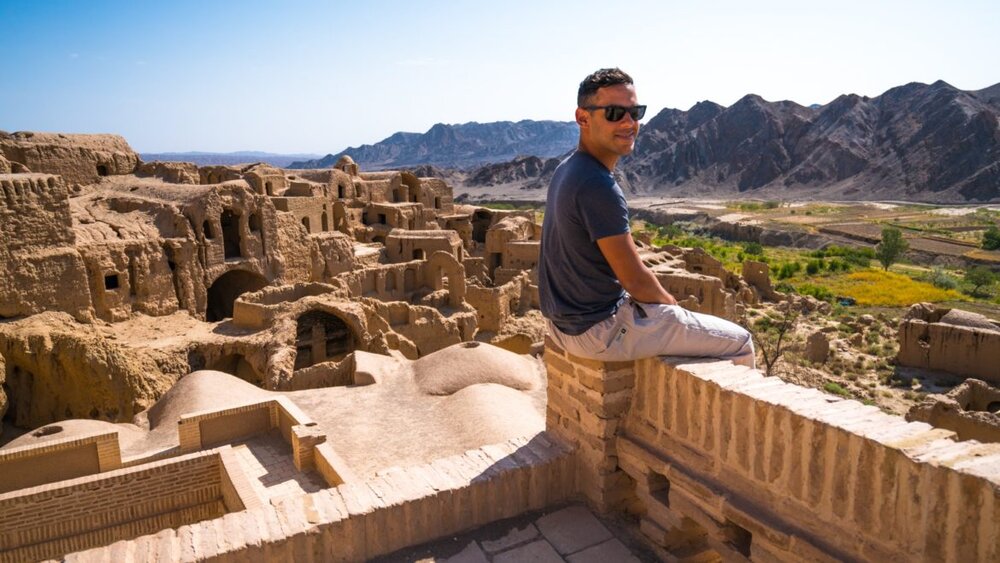From mazy bazaars to nomadic lands: Visit Iran in a slow, no-tech fashion

TEHRAN – Hiking along the southern coasts of the Caspian Sea, discovering secret side streets in a tiny Iranian village, walking through labyrinthine bazaars, or roaming down a rain forest path to rural cottages are some of the most memorable experiences can happen only on foot.
Walking is the ultimate in slow travel. It is one of the cleanest pleasures of traveling, offering exercise, fresh air, and an intimate perspective of the surroundings. Walking tours, including self-guided walks, have long been attracted international and domestic travelers interested in exploring their destination in a slow, no-tech fashion: on foot.
Packed with over 5,000 years of history, Iran is a destination that any avid traveler must experience at least once in their lifetime. From the ancient Persian Empire to the Zoroastrian temples, the countless mosques, and even the modern cities like Tehran, there is so much to see that one visit will not be enough.
Many tourism insiders believe that traversing the country equals an endless charm, as it embraces so many diverse cultures and landscapes, saying something like this: “Forget the VIP cars and become adept at slow travel by discovering Iran through walking tours. There are many stunning mosques and pristine deserts!” or “The country has so much to offer if you thoroughly visit every nook and cranny.”
Traditionally, one of the most popular ways to visit a city is to experience it on foot. Whatever their size, most historical cities, towns, and villages in Iran are best appreciated by walking, as their century-old city centers were first conceived to wander around.
Take Isfahan, for instance: a masterpiece of Safavid-era architecture popularly known as "half of the world". Numerous craftspeople are boasting skills in the amazing bazaars, producing beautiful handicrafts with copper, woods, ceramics, and wool.
A walking tour in its narrow alleys yields a unique opportunity to listen to the stories behind this Iranian heritage. While in Shiraz, local guides help to revive the traditions by showing visitors the old and forgotten jobs of the bazaar.
Here, a woman is sewing "Giveh", the oldest type of handwoven Iranian shoes; over there, a man is repairing old books in its old shop, while his neighbor quietly prepares nuts with saffron and salt all day long. Crossing the threshold of their old shops with a walking tour would be a priceless opportunity to meet with the last representative of these ancient jobs before they become part of the past.
From another point of view, bazaars are also synonyms of foods, with their unmissable colorful stalls of vegetables, herbs, and spices. Yet, most of these ingredients might be mysterious to a foreign eye.
It is possible to pierce the mystery of Persian cookery, and getting familiar with the concept of hot and cold natures in food, through joining a walking tour in the bazaars of Tehran, Shiraz, Yazd, or Isfahan. Not only it's an opportunity to discover dozens of unique local ingredients, but it's also a chance to taste the Iranian street foods and delicacies, in some traditional bakery known only by locals and shopkeepers.
People-watching and even mingling with them in the bazaars is one of the best ways to take the pulse of the country. Bazaars have traditionally been major economic and social centers in any Iranian city.
But for those who wish to have insights into the authentic Persian culture, adding a cooking workshop to a walking tour seems to be a must. Some believe that Persian cuisine is the soul of the country and meals are a cheerful moment beloved by every Iranian family.
From Tehran to Shiraz, participating in a cooking class allows discovering local cuisine far from the usual restaurants. For instance, in the town of Taft, near Yazd, there is an eco-lodge managed by a Zoroastrian couple, which aims to share their traditions with tourists, through cooking workshops performed in a pomegranate field.
You can also skip cities to be connected with another aspect of Iran. Yes, some of the most memorable walking experiences in Iran could take place beyond the city walls. Iran has an incredible nature, offering trekking experiences in the green peaks of the northern Gilan province, climbing Asia's second-highest volcano Mount Damavand, or experiencing both snow-capped mountains and dunes in two days, nearby Shirkooh, in central Iran.
Yet, the most authentic and moving walking adventures in Iran are without a doubt sharing the lives of nomads. For centuries, Iranian tribes have walked between their summer pastures and winter quarters in the mountainous areas, taking with them all their belongings.
Accompanying nomads during their migration, even for a day or two, maybe a lifetime experience. It will undoubtedly produce a rare insight into the culture of these ethnic groups.
No matter you visit a Shahsavan or a Qashqai tribe, the point is that in the twenty-first century, you will leave behind you all technologies and modern life, to feel a nomadic life and their herds and a taste of the most authentic Iran.
Experts say for travelers who are reasonably fit and enjoy being out in the open air, walking trips offer several benefits. Traveling on foot is the best way to get a close-up look at a local landscape and culture, whether you’re strolling down cobblestone streets or hiking along forest paths.
AFM
